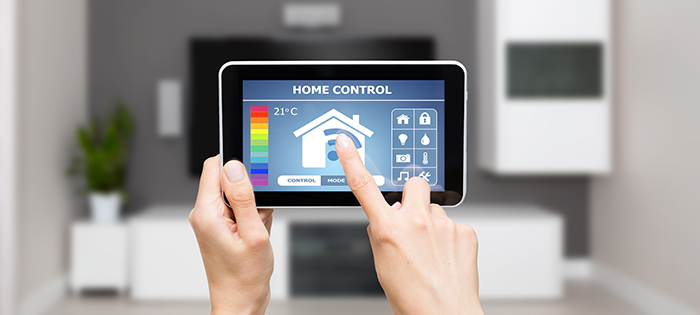- Smart Home Technology
- Smart Devices
- Energy Efficiency
- Smart Homes
Stay-at-Home Orders May Expand the Smart Home Market

Smart home adoption will likely increase as a result of the coronavirus crisis. Consumer attention is now focused on the home, which may increase smart device implementation. The pandemic also presents an opportunity to improve consumer education on smart home devices. In this fast-changing market, many consumers may be unaware of the full safety and efficiency benefits of smart home devices supported by new analytics capabilities. Now is the time to reach consumers with this timely information.
Consumer Patterns Shifting to Home-Related Purchasing
COVID-19-related impacts have turned the home into a multipurpose facility for work, school, leisure, and exercise. These pressing needs have translated into retail sales figures: the essential retailer Home Depot has remained open through the pandemic and has seen no decline in home improvement activity during the peak spring season (note: this article is behind a paywall). Likewise, consumer tech sales have remained robust, increasing year-over-year.
Increased home refinancing and remodeling activity in the current low interest rate environment is also supporting the trend. Applications where smart devices have gained a reputation—in home convenience, automated system control, and remote purchasing through digital assistants—are all becoming increasingly important to homebound consumers.
Devices Create Added Benefits in Sanitation and Home Optimization
Voice-activated lighting controls, smart door locks, wireless thermostats, and other smart devices have the added benefit of lessening the number of hands that are touching home fixtures. This function reduces the possibility of contagion within the home. According to a survey by enterprise software provider Ooma, 47% of consumers are interested in smart home technology for safety reasons.
Improved analytics also support home safety optimization. Traditionally, consumers buy smart home devices for convenience or automation, such as lights that combine with a smart security system. However, vendors are adding hyper-personalized insights into resource usage, enhanced safety monitoring (e.g., predictive fire or leak prevention), remote-controlled access, and other improvements made possible by analysis of more granular device data. Lowering energy usage through smart thermostats or smart plugs can be achieved to satisfy a timely need as home energy usage skyrockets.
Converging Trends Make the Smart Home an Attractive Opportunity
More consumer attention is focused on the home and home safety than ever before. Yet, as smart home devices become more accessible, a significant gap still exists in consumer knowledge about the current safety and efficiency capabilities of smart home devices. Vendors that fill this gap by informing a broader audience about the benefits of smart home devices will likely capture a larger share of the growing market. For more information on the smart home device and analytics market, see Navigant Research’s 2Q 2019 report, The Smart Home Overview, and Guidehouse Insights’ upcoming report, Smart Home Data Analytics.